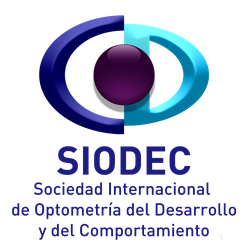Use of devices and vision
The prolonged use of electronic devices, such as phones, tablets, computers, and televisions, is increasingly integrated into our daily lives. However, excessive time spent in front of screens can lead to a range of visual problems, among which we can find the so-called Computer Vision Syndrome (CVS) or digital eye strain. This is mainly due to the constant demand for near focus, exposure to blue light, associated postural habits, and lack of blinking.
As we have discussed, excessive exposure to electronic devices can lead to a series of associated problems, among which we can find visual issues.
- Visual fatigue:
- Feeling of fatigue or heaviness in the eyes after using devices for a long time.
- It is often accompanied by eye discomfort and difficulty maintaining focus.
- Dry eye:
- The frequency of blinking decreases when looking at screens, which causes dryness, irritation, or a gritty sensation in the eyes.
- Blurred vision:
- It occurs when looking at the screen up close for a long time or when shifting focus between the screen and distant objects.
- Headache:
- Prolonged visual strain can trigger headaches or tension-type headaches.
- Light sensitivity:
- Prolonged exposure to blue light can increase sensitivity to bright lights.
- Difficulty focusing:
- Problems adjusting focus quickly from far to near and vice versa (accommodative spasm).
- Pain in neck and back:
- Although it is not a visual problem, the forced posture when using devices can negatively affect vision by limiting blood circulation to the eyes.
Main causes:
- Prolonged fixation: The eyes work harder when maintaining close focus for long periods.
- Reduced blinking: When looking at screens, blinking is reduced to half the normal frequency.
- Improper posture in front of the screen

Prevention and care:
20-20-20 Rule: Every 20 minutes, look at an object 20 feet (6 meters) away for at least 20 seconds to relax your eyes.
- Eye lubrication: Use artificial tears to prevent dryness.
- Adjust the lighting: Avoid direct reflection on the screen and work in a well-lit environment.
- Proper posture: Keep the screen at eye level and at a minimum distance of 50 cm.
- Conscious blinking: Take breaks to blink and naturally lubricate your eyes.
- Specific lenses for screens: Consult an optometrist to obtain lenses that reduce visual strain.
When to consult an optometrist:
If you experience persistent symptoms such as blurred vision, frequent headaches, or eye discomfort that does not improve with rest and good visual habits, it is important to see a developmental optometrist to conduct a complete evaluation of your visual system and find the best solution, whether with lenses, filters, or visual rehabilitation.
The conscious use of technology and healthy visual habits are key to preventing these problems and maintaining optimal vision.
